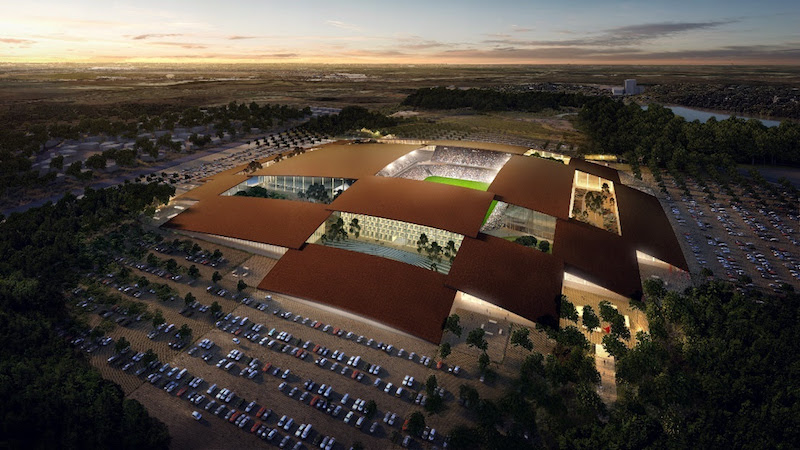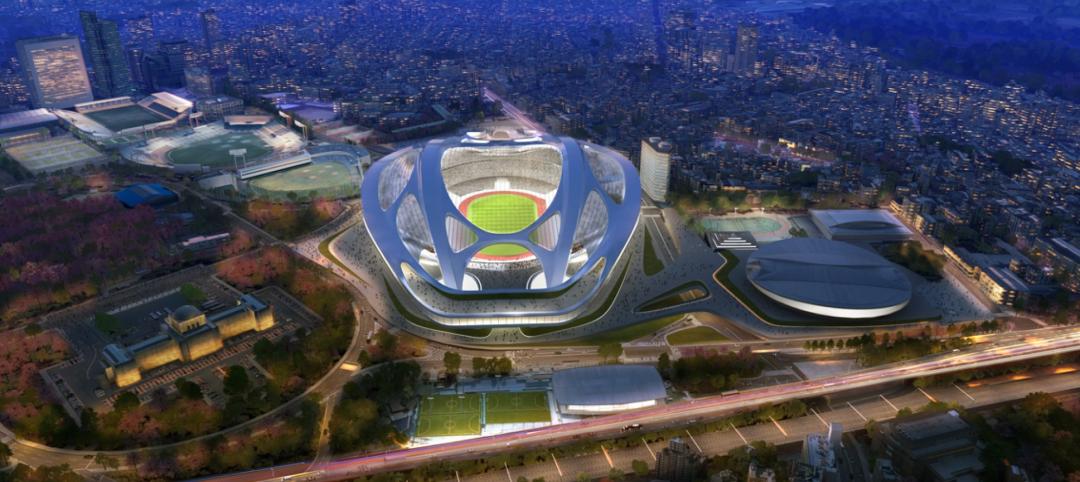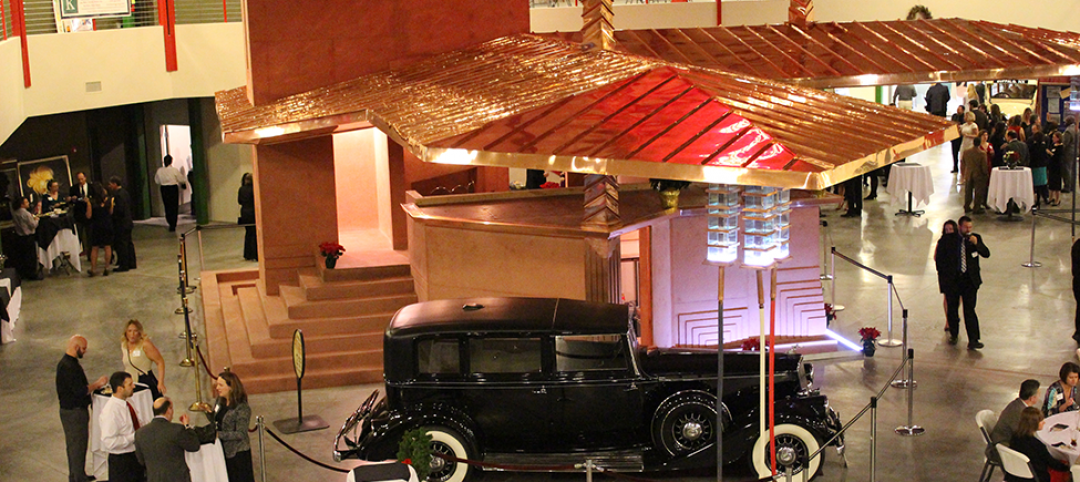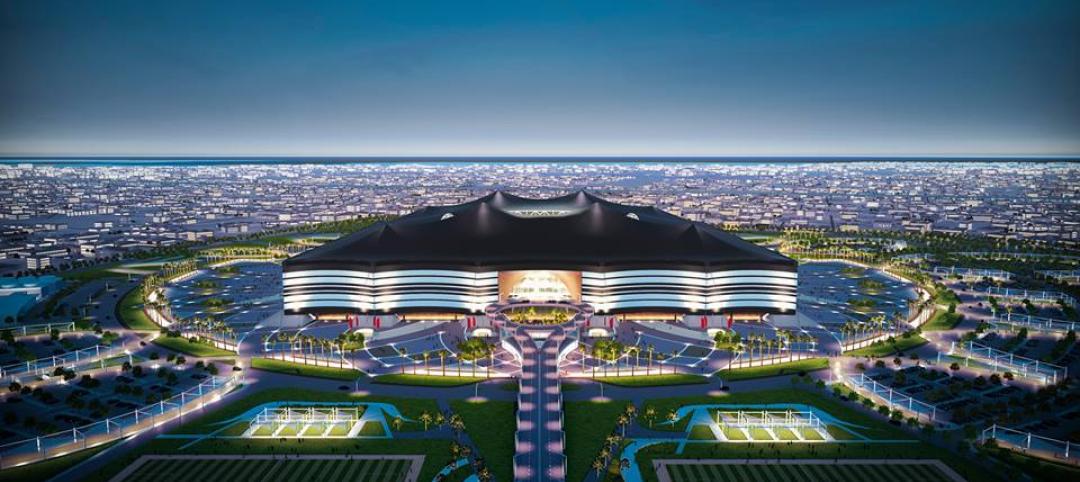Spread across 1.3 million sf in Austin, Texas the new East Austin District will provide the fast-growing city with its first pro-sports stadium and large-scale music arena.
The 40,000-seat outdoor bowl is designed for large-scale soccer and rugby matches, music festivals, and other major events. The 15,000-seat multi-purpose arena is connected to the stadium and will serve as the home for Rodeo Austin, musical acts, basketball, and hockey.
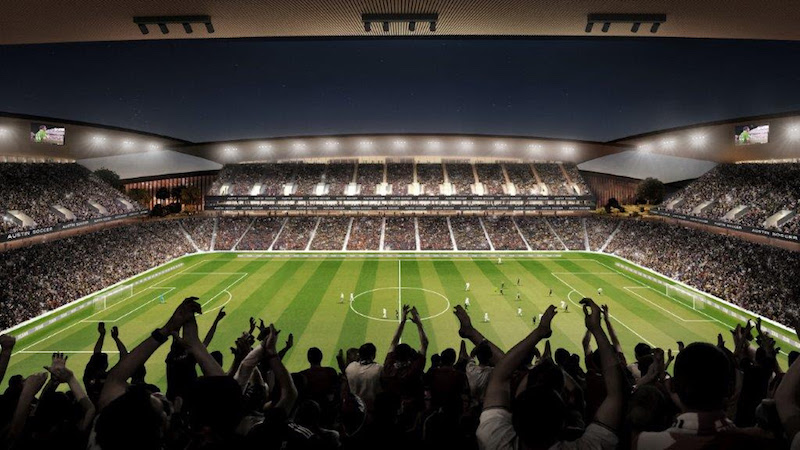 Rendering courtesy of BIG.
Rendering courtesy of BIG.
The stadium and arena are joined by 190,000-sf of premium facilities and support functions. The separate buildings are unified by all-wooden interiors. Eight courtyards act as outdoor living rooms that connect the entire district. Visitors can gather in the public parks and plazas for communal gatherings, food truck scenes, recreation, and concerts. At the edge of the district are buildings for retail, shopping, dining, and hospitality. Youth education and enrichment are promoted via 28,000-sf of youth facilities.
 Rendering courtesy of BIG.
Rendering courtesy of BIG.
“Like a collective campus rather than a monolithic stadium, the East Austin District unifies all the elements of rodeo and soccer into a village of courtyards and canopies,” says Bjarke Ingels, Founding Partner, BIG, in a release. “Embracing Austin’s local character and culture, the East Austin District is a single destination composed of many smaller structures under one roof.”
The entire district is laid out in a checkerboard that appears as a latticed roofscape from above. The roof offers protection from the elements as well as a home for red photovoltaic panels that allow the entire district to be self-sufficient. The plan is for East Austin District to one day share its energy resources community-wide to power East Austin’s electricity and economy.
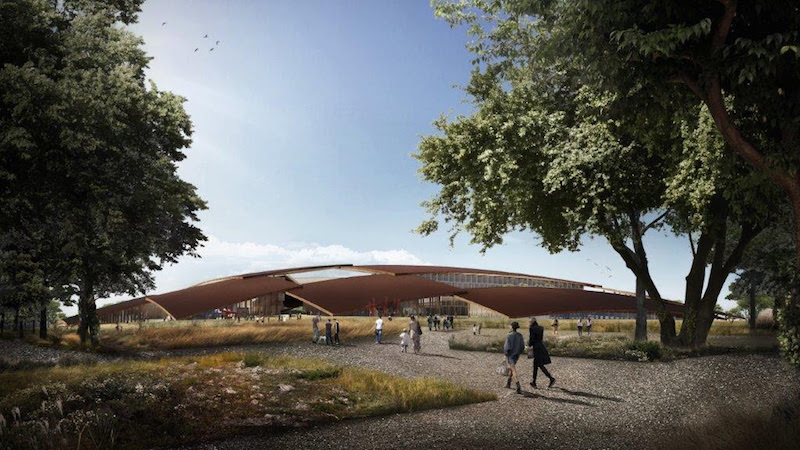 Rendering courtesy of BIG.
Rendering courtesy of BIG.
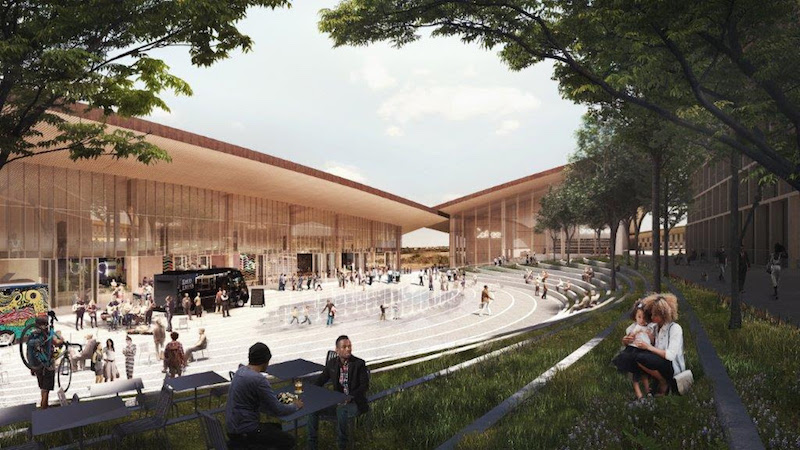 Rendering courtesy of BIG.
Rendering courtesy of BIG.
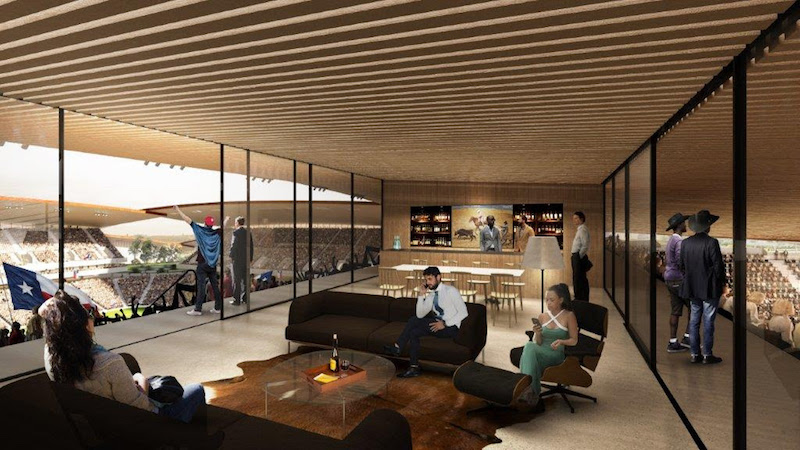 Rendering courtesy of BIG.
Rendering courtesy of BIG.
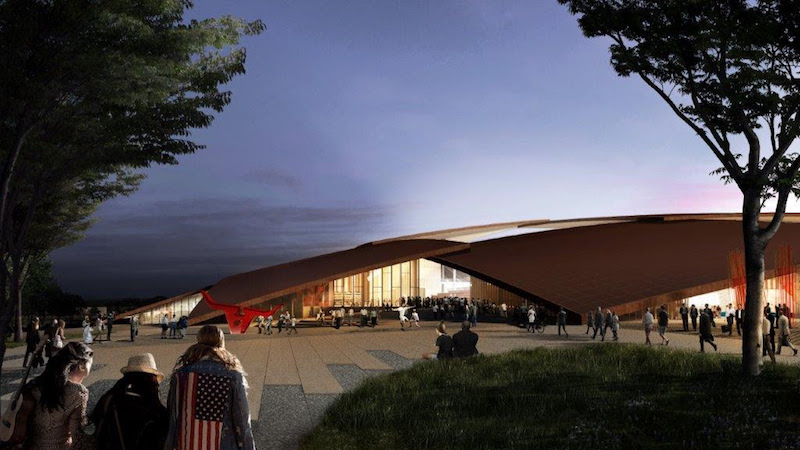 Rendering courtesy of BIG.
Rendering courtesy of BIG.
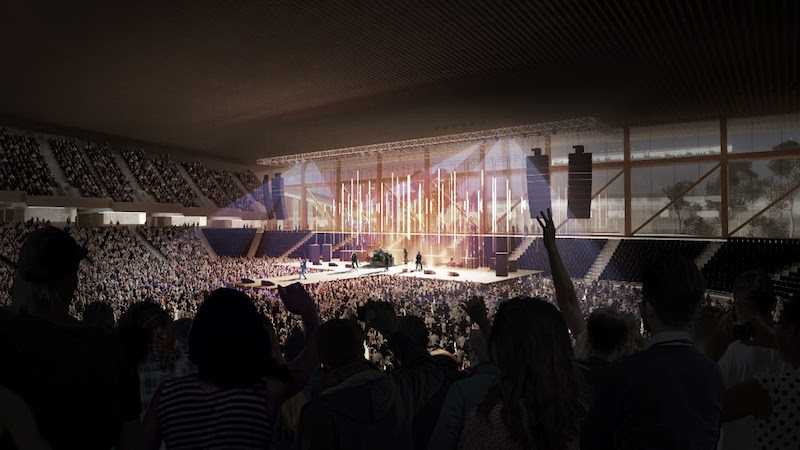 Rendering courtesy of BIG.
Rendering courtesy of BIG.
Related Stories
| Jul 18, 2014
Top Architecture Firms [2014 Giants 300 Report]
Gensler, Perkins+Will, NBBJ top Building Design+Construction's 2014 ranking of the largest architecture firms in the United States.
| Jul 18, 2014
2014 Giants 300 Report
Building Design+Construction magazine's annual ranking the nation's largest architecture, engineering, and construction firms in the U.S.
| Jul 17, 2014
A new, vibrant waterfront for the capital
Plans to improve Washington D.C.'s Potomac River waterfront by Maine Ave. have been discussed for years. Finally, The Wharf has started its first phase of construction.
| Jul 8, 2014
Does Zaha Hadid’s Tokyo Olympic Stadium have a design flaw?
After being criticized for the cost and size of her stadium design for the 2020 Olympics in Tokyo, a Japanese architect points out a major design flaw in the stadium that may endanger the spectators.
| Jul 8, 2014
Frank Lloyd Wright's posthumous gas station opens in Buffalo
Eighty-seven years after Frank Lloyd Wright designed an ornamental gas station for the city of Buffalo, the structure has been built and opened to the public—inside an auto museum.
| Jul 7, 2014
7 emerging design trends in brick buildings
From wild architectural shapes to unique color blends and pattern arrangements, these projects demonstrate the design possibilities of brick.
| Jul 7, 2014
A climate-controlled city is Dubai's newest colossal project
To add to Dubai's already impressive portfolio of world's tallest tower and world's largest natural flower garden, Dubai Holding has plans to build the world's largest climate-controlled city.
| Jul 3, 2014
Arthur Ashe Stadium the latest to tap Birdair
The United States Tennis Association (USTA) and ROSSETTI, the architect of record for the Arthur Ashe Stadium, tapped Birdair to supply a 210,000-square-foot, PTFE membrane, retractable roof, expected to be installed by 2016.
| Jul 2, 2014
First Look: Qatar World Cup stadium design references nomadic heritage
Organizers of the Qatar 2022 World Cup, the Supreme Committee for Delivery and Legacy, recently unveiled designs for the second stadium.
| Jul 2, 2014
Emerging trends in commercial flooring
Rectangular tiles, digital graphic applications, the resurgence of terrazzo, and product transparency headline today’s commercial flooring trends.


